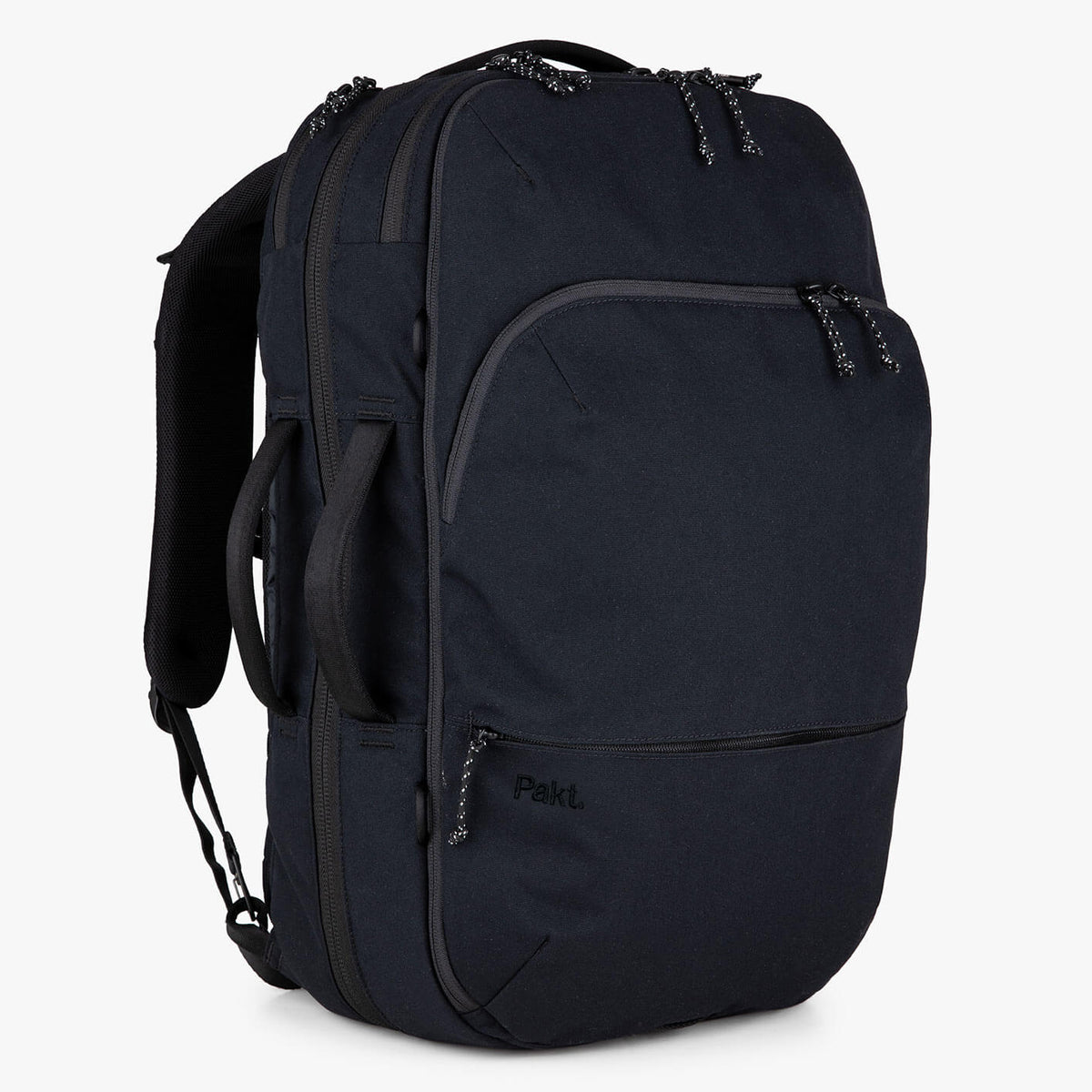How To Spot Greenwashing Before You Buy
Greenwashing is a misleading practice that stands in the way of a sustainable future. Every day, consumers are blasted with marketing initiatives regarding corporate sustainability. The question is, are these companies honestly making real changes to address environmental issues? In many cases, the answer is no.
As consumers around the globe are becoming increasingly environmentally aware, brands are capitalizing on the growing demand for “sustainable” goods and services. Brands see the economic benefits of appealing to consumers… but many aren’t really interested in making the changes that matter.
What is Greenwashing?
Greenwashing is the practice of falsely promoting a company’s environmental efforts. It’s the act of misleading consumers and making a product seem sustainable for the sake of a sale.
“Larger companies recognize that sustainability-minded consumers are a real group to be pandered to and appealed to,” Sustainability expert Ashlee Piper tells Pakt. As more and more consumers make decisions on products based on their environmental impact, appearing sustainable is big money.
One example of greenwashing was highlighted in a 1986 essay by Jay Westerveld, who coined the term. Hotels were putting notices in the rooms requesting that guests use their towels multiple times, supposedly in an effort to protect the environment. In reality, the hotels were simply capitalizing on reduced labor and laundry costs with minimal reduction in water usage.
The greenwashing of products and services often takes place in massive PR and marketing campaigns, from the repackaging or renaming products to the rebranding of entire organizations. These campaigns are specifically designed to convince consumers that these brands are more environmentally responsible than their competitors.
Greenwashing goes against everything environmentally conscious consumers stand for. The reality is, brands that practice greenwashing are often doing more to convince people that they’re sustainable than they are actually implementing responsible practices.
Why is Greenwashing Harmful?
Obviously, greenwashing is deceptive and misleading to the consumer. It makes you believe that you’re supporting companies that align with your own values, when quite the opposite is often true. But the ramifications go much deeper than that.
Addie Fisher, founding editor of Old World New, tells Pakt, “When brands lie about their products being sustainable and perpetuate greenwashing, the Earth and people will still be harmed. No matter the false facade they build up about being ‘eco-friendly.’”
Take the issue of greenwashing and single use plastics, for example. More than 90% of the plastic made today is not recycled. And much of it ends up in the ocean, where some say it could outweigh fish by the year 2050. These astounding facts have many companies working hard to paint their plastic products in a more positive light.
One such company has begun producing plastics made from bio-based polymers rather than petrochemicals. These bio-plastics break down thousands of years faster than traditional plastics, which sounds great in theory.
But what the company isn’t telling you is that their plastic requires very specific conditions to decompose, including oxygen and sunlight, which are both scarce if the plastic is buried in a landfill. It’s the very definition of greenwashing, and the planet is paying the price.
How to Spot Greenwashing Before You Make a Purchase
Clever marketing and vague claims can make it extremely difficult to distinguish greenwashing from true corporate responsibility. Even if you’re shopping with the best intentions, it’s likely that you’ve fallen prey to false claims before. But it doesn’t have to happen again.
So, with brands worldwide capitalizing on the green-sustainability wave, how can consumers know which brands are really implementing sustainable practices? Greenwashing, by its very nature, is meant to be subtle and misleading, but there are some common clues to look for.
Are their claims verifiable?
Does the brand offer scientific evidence or easily accessible information to back up their claims? Are their claims supported by independent third parties? Before you make a purchase, do your own homework and look for things like supply chain transparency and life-cycle analysis to verify the brand’s ecological responsibility.
There’s no harm in asking the brand directly, either, especially if you can’t seem to substantiate their claims on your own. If they’re really doing what they say, they’ll be more than happy to talk about it, answer all your questions, and provide proof to back up their claims.
Is the product built to last?
A key to sustainable consumption is consuming less. This means buying products that are built to last. Truly green companies use that as a guiding principle.
“The biggest tell as to how allegiant a company is to being sustainable is the longevity of their product,” Piper says. “Do they intend to sell you more later, [like] something that constantly needs a refill [or] something that degrades over time?”
“[If] the company is really thoughtful about end-of-life or circularity, that’s important because that’s less money for them. It signals to me that they’re interested in doing the right things.” If you’re looking at a product that has a short lifespan, that’s a sign of greenwashing at work.
Look for the hidden trade off.
As demonstrated in the hotel example above, companies often make claims of sustainability based on certain attributes without telling the whole story. Our job as consumers is to explore the actual process by which products are made, which materials are used, and how by-products are disposed of.
Be wary of buzzwords.
Be wary of brands that use fluffy language, like all-natural or eco-friendly, in their marketing. These vague claims are meaningless because they tell us nothing about the environmental impact of the product. There are no real standards for what qualifies as “natural.”
This allows dishonest companies to use the word quite freely. The Federal Trade Commission, or FTC, does sometimes intervene, but it’s rare. Fisher also points out that greenwashing companies often incorporate and advertise one “natural” ingredient or material while the overall product is “still toxic and not sustainable.”
The FTC’s Green Guides caution consumers to watch for words like “degradable,” “free-of,” and “renewable.” These words may be meaningful, but only if used correctly and honestly. For example, if a brand brags that their product is “free-of” a harmful substance that’s not typically in that kind of product anyway, it’s pretty meaningless.
Furthermore, a product can be natural and still sourced or produced in a way that’s harmful to the environment. That’s why you need verifiable information about the company’s manufacturing processes. What you’re looking for are stamps of approval from third-party organizations, such as Certified Organic, Fair Trade, B Corporation, or Climate Neutral.
Are they using “green visuals?”
While green visuals aren’t always a bad thing, be careful not to fall for subjective images that don’t back up the company’s sustainability claims. Beware of things like eco-friendly logos, flowers, and trees used in the company’s marketing with the intention of misleading consumers.
One example of a misleading green visual is packaging a “natural argan oil” shampoo in a green plastic bottle with beautiful pictures of bamboo on the label. While this packaging screams sustainability and eco-friendliness, one look at the ingredient label will tell you what you really need to know.
Piper says she’s seen an “extreme influx” of greenwashing companies touting things like “post-consumer plastic” or “less plastic” in packaging. But “the contents inside are still tested on animals, laden with chemicals, [and] pollute the waterways.” If the product is full of chemicals and packaged in single-use plastic, it’s not biodegradable or eco-friendly. Simple as that.
Are their certifications real?
Claiming certifications by a third party that doesn’t exist is a common aspect of greenwashing. It’s called a “false label.” When shopping for eco-friendly products, do your research to ensure that the company isn’t making false claims based on unreliable or ineffective endorsements.
Watch for selective disclosure.
Be wary of companies that highlight all the positive environmental aspects of their practices without any mention of the negative or what needs improvement. An excellent example of greenwashing is an automobile manufacturer who highlights their vehicle’s fuel efficiency but fails to mention the destructive mining practices that are required to produce their lithium battery.
Be wary of bargain pricing.
The unfortunate truth is, if something is super cheap, it’s probably been made in a foreign country using questionable practices, or it contains cheap components that were shipped halfway across the globe. Often, it simply costs more to produce things responsibly and follow ethical business practices.
As consumers we need to understand that we might have to pay more to shop with brands that are truly eco-friendly. At the very least, don’t hesitate to ask questions before you jump at the chance to purchase something at a “too good to be true” bargain price.
The Bottom Line
Still feeling unsure about exactly how to spot greenwashing? Consider this. Greenwashing companies love to tell you they’re green — but can they explain exactly how?
If they’re doing the work behind the scenes, you should be able to read all about it on their website. Look in their About section or a dedicated sustainability section, like the Pakt Responsibility page.
The information should be specific. What parts of the product and process are earth-friendly, and how so? What exactly are the environmental benefits of what they’re doing? If they’re not getting into those nitty-gritty details, it’s probably because they don’t have much to share.
Another way to spot greenwashing is through non-specific “sustainable actions” that aren’t related to their product. A particularly widespread example of greenwashing? Saying they’ll plant a tree for every purchase- something both Piper and Fisher warn of.
“That’s great, but is the brand moving their products toward more sustainable production and consumption processes as they plant trees, too?” Fisher questions. These types of greenwashing tactics are an easy pass for companies hoping to score extra points with eco-minded consumers without making any changes to their business processes.
Learning how to spot greenwashing will help you make informed purchases- and ensure that untrustworthy companies aren’t rewarded for deceptive marketing practices. Wondering how Pakt measures up when it comes to sustainability? Read our Transparency Report.




